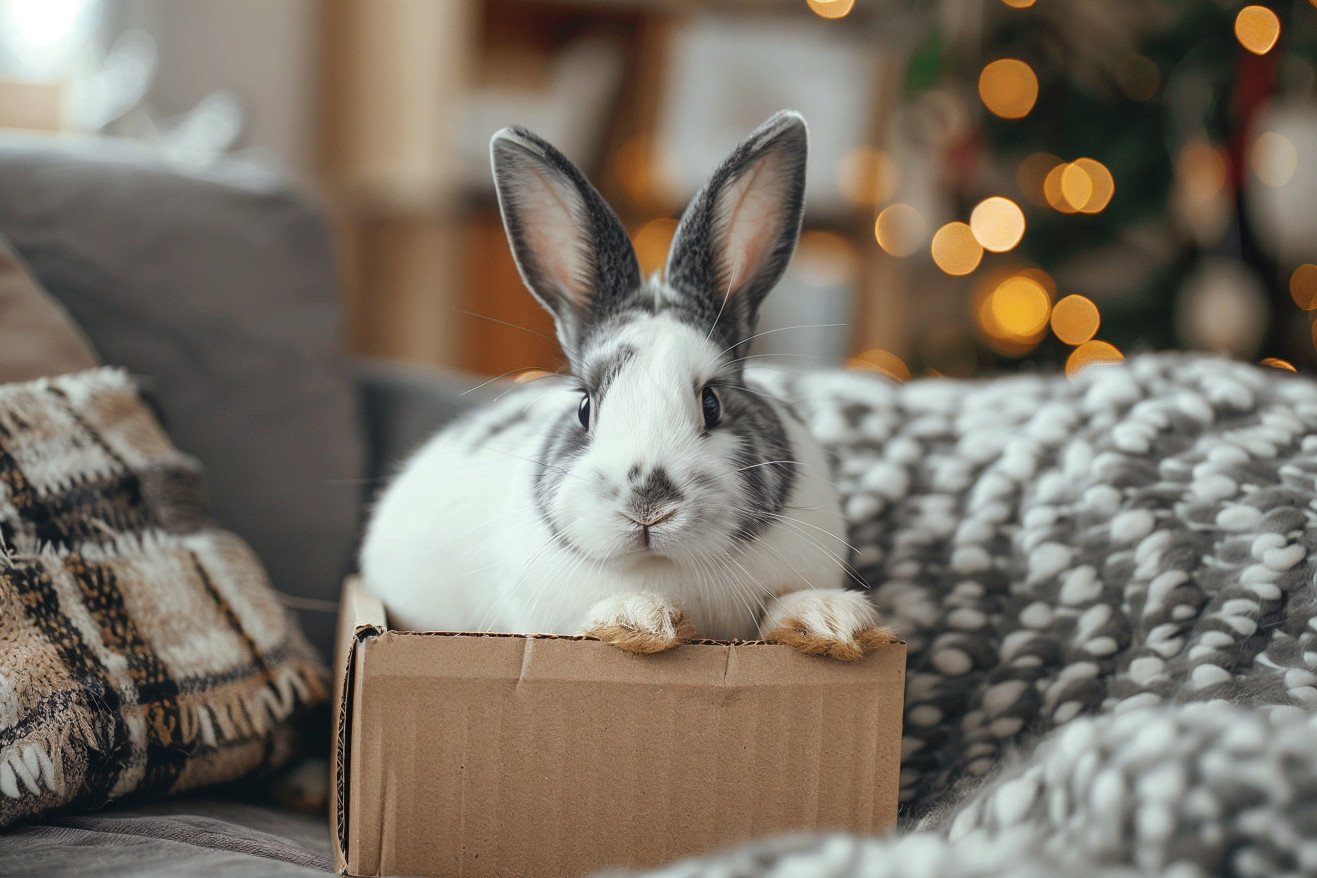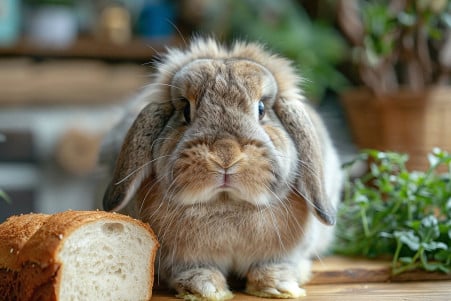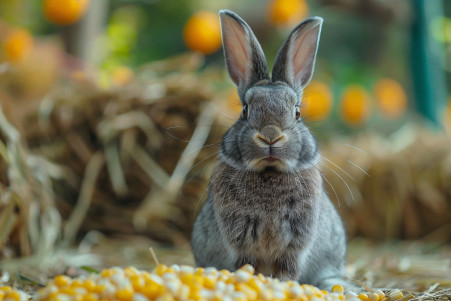Can Rabbits Eat Cardboard? What You Need to Know
30 May 2024 • Updated 30 May 2024

If you're a rabbit owner, you might be considering giving your pet some cardboard to chew on. While cardboard isn't poisonous to rabbits, it's not nutritious and can lead to health problems if rabbits eat too much of it. So, you're better off sticking to a diet of hay, fresh veggies, and high-quality rabbit pellets.
Even though cardboard may not seem like a big deal, it's important to know the risks and rewards of letting our floppy-eared friends eat it. In this article, we'll take a look at what veterinary science and other experts have to say about rabbits and cardboard. We'll also talk about what rabbits should eat and how cardboard can fit into their diet. By the end, you'll know whether this common household item is safe and healthy for your rabbit to snack on.
Can rabbits eat cardboard?
Cardboard That Is Safe for Rabbits
The Tiny Herd says that plain brown cardboard boxes and tubes are safe for rabbits to chew on. However, you should stay away from cardboard that has glossy coatings, tape, stickers, or that has been wet, as these can contain toxic chemicals. According to The Packaging Company, paper towel and toilet paper rolls are great, safe chew toys for rabbits.
Before giving your rabbit cardboard, make sure to remove any staples, tape, or other items that could be dangerous. As Oxbow Animal Health points out, cardboard should be free of pesticides, waxes, heavy metal-containing inks, or anything else that could be toxic if ingested. To be safe, only give your rabbit plain, unprinted cardboard that hasn't been exposed to any unknown substances.
By offering your rabbit safe, appropriate cardboard to chew on, you can meet your rabbit's natural chewing needs without putting their health in jeopardy. Just make sure to take a few precautions, and cardboard can be a great way to enrich your rabbit's life.
Everything in Moderation and Potential Risks of Cardboard Consumption
While cardboard can be a safe and fun chewing option for rabbits in moderation, it should not be a staple of their diet. The RSPCA notes that "Rabbits should not consume significant quantities of cardboard or other chewing materials." Consuming too much cardboard can cause a blockage or other health problems.
It's important to keep an eye on your rabbit's cardboard consumption and talk to a vet if you notice them eating it, as Oxbow Animal Health points out. If you notice your rabbit is eating too much cardboard, it's best to offer them other things to chew on and limit their access to cardboard. Cardboard should never be a substitute for the staples of a rabbit's diet - hay, leafy greens, and water.
By using cardboard in a safe and responsible way as an occasional snack or enrichment tool, you can help your rabbit satisfy their natural urge to chew without compromising their health or nutritional needs.
For Mental Stimulation and Chewing
Cardboard boxes and tubes can be used to give rabbits mental stimulation and a place to chew. The Indiana House Rabbit Society notes that rabbits love boxes with multiple openings, which encourages them to crawl, scratch, and dig. Meanwhile, adding hay or treats to cardboard tubes can make them more enticing for rabbits to chew and explore.
To keep things fresh and prevent rabbits from getting bored, make sure to switch out the cardboard toys you give them regularly. Bunnylady.com also suggests offering a variety of chewing options, including safe woods like willow and apple branches, to meet a rabbit's natural chewing needs. This will not only keep them from getting bored, but it will also help keep their teeth, which never stop growing, at a healthy length.
By using cardboard in these ways, rabbit owners can make sure their pets are getting the mental stimulation they need and encourage positive behaviors. With a little thought, this cheap material can be a great way to add to a rabbit's playtime and overall happiness.
Introduce Cardboard and Watch for Boredom
It’s important to introduce new cardboard toys and enrichment items slowly to avoid overwhelming your rabbit. Bunnylady.com notes that rabbits can be choosy about the toys they like, so start with a few and rotate them often to keep things fresh and interesting.
If your rabbit is showing signs of boredom, you may notice a decrease in activity, appetite, and interest in play. Petplan explains that stimulating rabbits is all about giving them opportunities to forage, explore, and socialize. This can be done by providing safe items for them to chew on, such as apple branches and willow twigs, and engaging in interactive play.
If your rabbit is showing signs of stress or boredom that don’t go away, you should consult a vet. Animal Friends, Inc. notes that a stimulating environment can help prevent boredom and other unwanted behaviors. By slowly introducing and rotating cardboard toys, you can make sure your rabbit stays mentally and physically stimulated.
Storing and Using Cardboard Toys Safely
Storing and using cardboard toys safely is important to ensure your rabbit's health and happiness. Rabbit.org recommends storing cardboard in a dry, cool place to avoid mold and moisture. If cardboard gets dirty or wet, it should be thrown away.
When you first give your rabbit cardboard toys, you should monitor them to make sure they're playing with them in a safe way. The Long Island Rabbit Rescue Group says that cardboard boxes and tubes with at least two openings are best because they encourage natural burrowing and scratching. You can also stuff cardboard with hay or other treats to make it more fun for your rabbit to play with.
To keep your rabbit from getting bored, you should switch out the cardboard toys you give them. Bunnylady.com recommends that you give your rabbit a variety of things to chew and dig in to keep them entertained and happy. If you do this, you can make sure your rabbit is in a stimulating and safe environment that allows them to enjoy cardboard as a special treat or toy.
Conclusion: Using Cardboard Safely and Responsibly
Cardboard can be a safe and affordable option for rabbits to chew and play with in moderation. The best option is plain, unprinted cardboard, which is free from chemicals and other potentially toxic ingredients. Keep an eye on how much cardboard your rabbit is eating and offer other chewing options if they eat too much.
Keep things fresh by rotating different cardboard items to keep your rabbit engaged and entertained. If you have any concerns about your rabbit's health, behavior, or anything else, don't hesitate to reach out to a vet.


